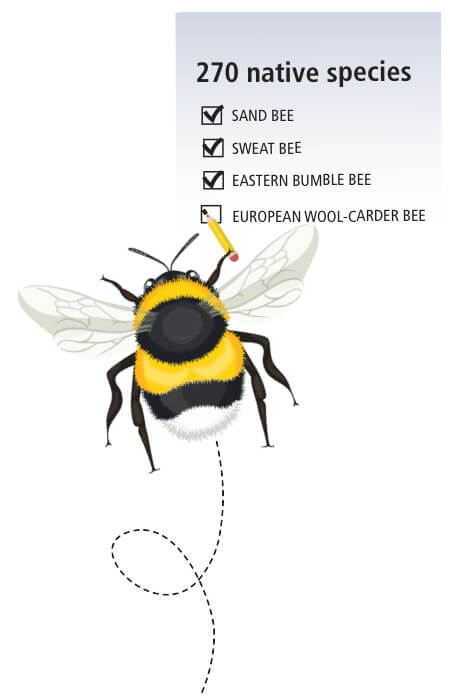The bee list
The first checklist of Maine bees has been compiled using wild blueberry research records from the 1800s to the present, as well as private and public collections, and citizen science observations. It has documented a total of 278 species — all but eight of which are native, according to a scientific team led by University of Maine bee and pollination experts.
The new inventory of Maine bees is designed to serve as a baseline for measuring the effects of anticipated climate and habitat changes on native and exotic bee populations in coming decades, according to UMaine conservation biologist Alison Dibble, and entomologists Francis Drummond and Constance Stubbs. The 278 bee species reflect 37 genera and six families. The largest genera are sand bees, Andrena, and sweat bees, Lasioglossum, each with more than 50 species.
The hope is that bees associated with other crops — including apple, highbush blueberry, cranberry, squash and pumpkin — can be studied and added to the checklist. The researchers — Dibble, Drummond, Stubbs, Michael Veit and John Ascher — published their findings in the journal Northeastern Naturalist.
A foundation for the inventory comes from decades of UMaine research of lowbush blueberry pollinators in the state. The earliest scientific studies of Maine bees include reports of entomological collecting trips beginning in 1861. Other sources of information for the checklist include taxonomic catalogs, and specimens in collections in the northeastern United States, such as the American Museum of Natural History, the Peabody Museum of Natural History, university collections at UMaine and Cornell University, and private collections.

